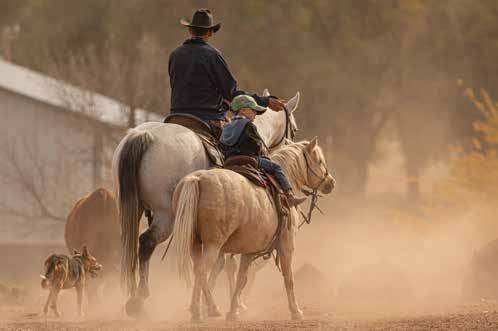
1 minute read
Marketing Update
Fads Fade
by Rachael Oliver, Commercial Marketing Specialist
During the cold winter months of January and February, producers begin to reflect on their past bull-buying decisions. As they feed cows, they look out on their herd and ask themselves, “Did the majority of the herd have a successful pregnancy rate, or did they end up culling a bigger portion either as late breds or just simply open?”
They also look back on last spring’s calf crop and ask, “Did those calves bring value to the marketplace and more importantly were those calves sought out by cattle buyers?”
All of those factors play through producers’ mind every year as they prepare for bull sale season. And if they haven’t, now is the time to start. Cattlemen need to evaluate last year and years past on how their herd has performed. Without looking back, producers won’t know if their bull-buying decisions were a factor in either a successful year or a complete failure.
So many factors tie in to choosing the right bull; there is a ton of pressure not only on the seedstock producer, but more importantly, on the commercial cattleman. Their bottom line depends on if the bull they chose will successfully breed their cows and make calves that will finish and hang a carcass with value. With all this pressure, the best thing to remember as cattlemen and women attend bull sales is fads fade, but a balance of phenotype and genotype keep your herd moving in the right direction.
Finding a balance of both phenotypic and genotypic traits allows for producers to remain focused on EPDs, but also not lose sight of structure quality, frame size and overall muscling capabilities. By focusing on balance, producers won’t have to give up on certain traits that could potentially set their herd back causing their feeder calves to be less valuable.
Along with playing a balancing act with traits, before you enter the bull buying market, visit with either your sales representative or the feedyard partner you sold your calves to. Whether you contracted your cattle off the ranch or sold through the sale barn, talk to those individuals. They can help inform you on the progress and health of your calves. Just because your calves enter a new segment of the beef industry does not mean the work stops there for producers. Maintaining a relationship with those industry partners can help guide your decision making when it comes to producing that next calf crop.
As we kick off the spring sale season, remember fads fade and single-trait selection could hinder your herd in the long run. By working alongside the marketing team and other industry partners, you have a wealth of knowledge waiting to assist you along your journey. //








